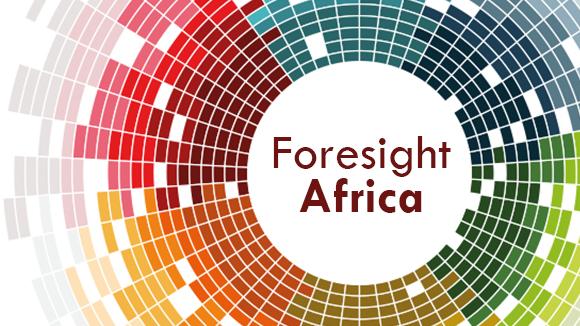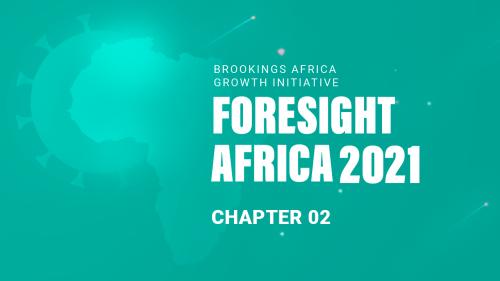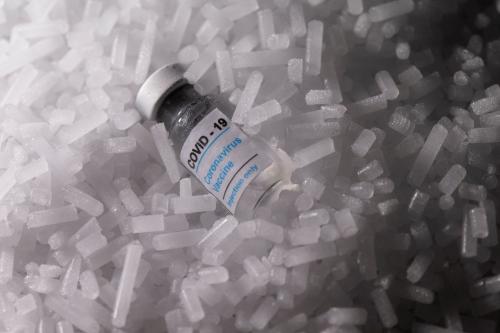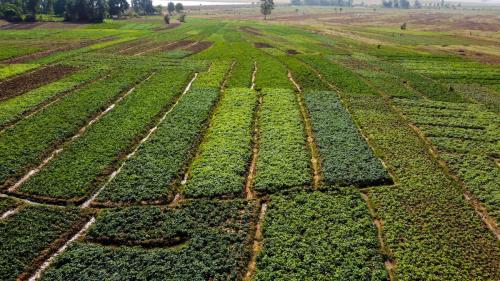Below is a Viewpoint from Chapter 2 of the Foresight Africa 2021 report, which explores top priorities for the region in the coming year. This year’s issue focuses on strategies for Africa to confront the twin health and economic crises created by the COVID-19 pandemic and emerge stronger than ever. Read the full chapter on support for public health.
 After their introduction more than 80 years ago, antibiotics saved millions of lives, transforming health care. Now, though, the ubiquitous use of these “wonder drugs” has led to the natural selection of antibiotic-resistant bacteria—a threat to the very gains once made. Frighteningly, the spread of antibiotic resistant bacteria today is a silent pandemic that could undermine health systems the world over. Already, antibiotic resistance has been estimated to claim more than 750,000 lives every year. Some of the most dire consequences of this phenomenon could be for the poorest and most vulnerable people in countries that never had adequate access to antibiotics to begin with.
After their introduction more than 80 years ago, antibiotics saved millions of lives, transforming health care. Now, though, the ubiquitous use of these “wonder drugs” has led to the natural selection of antibiotic-resistant bacteria—a threat to the very gains once made. Frighteningly, the spread of antibiotic resistant bacteria today is a silent pandemic that could undermine health systems the world over. Already, antibiotic resistance has been estimated to claim more than 750,000 lives every year. Some of the most dire consequences of this phenomenon could be for the poorest and most vulnerable people in countries that never had adequate access to antibiotics to begin with.
In Nigeria, for instance, prompt access to effective antibiotics could potentially avert an estimated 49,407 under-5 pneumonia deaths annually. Due to lack of data for other diseases, experts estimate that this number is likely the tip of the iceberg. For example, data on neonatal sepsis deaths in Nigeria suggest 19,400 cases were attributable to pathogens resistant to first-line antibiotics. This stands in stark contrast to the 1,342 Nigerian deaths known to be caused by COVID-19 thus far (as of January 9, 2021).
The “ticking timebomb” of antibiotic resistance has emerged under two classic market failures. On the demand side is the tragedy of the commons—the mis- and overuse of antibiotics as a public good. On the supply side is the lack of incentives to develop new antibiotics caused by scientific challenges, high drug development costs, and short drug lifespan due to development of resistance, which call for new business models. While wealthier countries have been able to kick the can down the road by switching to more expensive antibiotics, already-fragile health systems in Africa will be stretched beyond breaking point as the switch from first-line antibiotics adds a median overall cost of $700 per infection.
In recognition of the serious health challenges imposed by antimicrobial resistance (including viral and parasitic infections), African national and regional leadership has created action plans to combat the problem. (On September 20, 2020, the African Union Heads of States and Governments endorsed a common position on antimicrobial resistance. As of November 2020, 33 African countries have National Action Plans on Antimicrobial Resistance.) However, funding remains a critical issue as the costs of implementing national action plans, including disease control and prevention, are high. For example, implementation of Zimbabwe’s plan is estimated at $44.6 million over five years.
Moreover, the COVID-19 pandemic has revealed that reliance on individual national mechanisms, legislation, and strategies is insufficient for combating such a microscopic foe. Furthermore, as with climate change, the potential costs of antibiotic resistance are highly uncertain and potentially catastrophic. Both raise questions of intergenerational equity as countries that “polluted” the least will pay the highest price as antibiotics lose their effectiveness. Lessons from climate change models could serve as examples for transformation of health and agriculture systems towards sustainable use of antibiotics while securing access in less developed countries.
Ensuring access to effective antibiotics for future generations must be a critical part of rebuilding global health systems. The solution must be global and collaborative, and the time to act is now.
The Brookings Institution is committed to quality, independence, and impact.
We are supported by a diverse array of funders. In line with our values and policies, each Brookings publication represents the sole views of its author(s).








Commentary
Preventing the next pandemic: Addressing antibiotic resistance
February 8, 2021